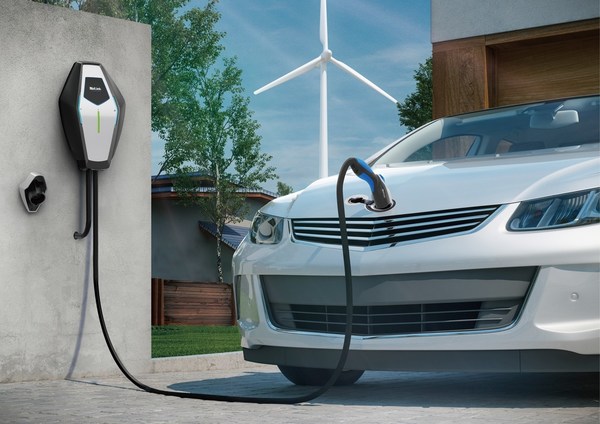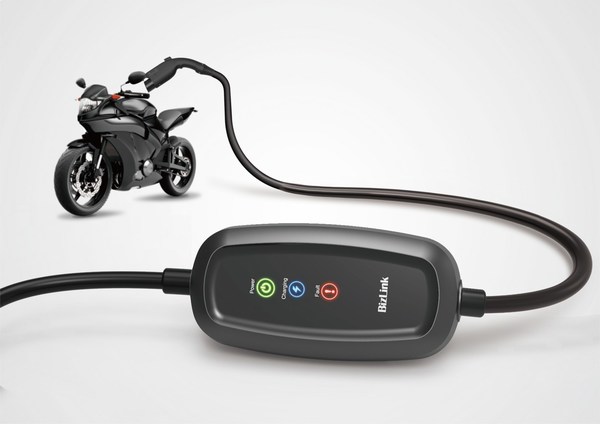BizLink Technology, Inc. Shares Insights on Why Safety Matters When It Comes to EV Charging Stations
FREMONT,Calif.,Oct. 13,2021 -- There's nothing like the excitement that comes with purchasing an electric vehicle for the first time. Of course,most attention is focused on the vehicle's attractive features and performance,but equal consideration should also be given to how and where to charge the vehicle. Despite the growing number of public charging stations now available throughout several cities and locations,many consumers will still opt for the convenience (and cost savings) of having their own personal chargers at home. However,when it comes to these types of chargers – technically referred to as Electric Vehicle Supply Equipment (EVSE) – safety should also be considered. Since at-home Level 1 and Level 2 chargers serve as the electrical gateway through which EVs derive their power/energy,BizLink Technology,Inc. believes that it is important to understand the underlying safety concerns to mitigate any potentially hazardous risks.


Hazards of EV Chargers
Fire is the number one hazard when it comes to EVSE installations. While fire can be caused by a variety of reasons,the most common cause is outdated electrical wiring and power supplies within the building or structure where the charger is installed. All electrical wiring should meet the EVSE's charging requirements and should be compatible with each of the equipment's technical specifications,regardless of whether it's a Level 1 or Level 2 charger. For example,a standard 32A wall-mounted AC charger requires a voltage range of 110V-240V and 32A of charging power. Once mounted onto a wall,the charger is then connected to the structure's power source or grid,which must be able to support the charging system's specifications to transfer the AC power safely and successfully to the vehicle during charging. Without the proper electrical support,the charger could overheat and cause a failure. Unlike standard AC EV chargers,BizLink's 32A Wall-Mounted EVSE features a temperature sensor function that detects overheating.
Another potential hazard involving EVSE is Ground Fault Circuit Interrupter (GFCI) failure. Standard EV chargers are connected to their power source via a GFCI electrical outlet since they are specifically designed to prevent electrical shock occurrences. However,in some parts of the world,reports have revealed a 57% failure rate among GFCI breakers,citing variables such as lightning,age,and wear,as well as ineffective inspection policies as contributors to the failure of these devices. Therefore,it is important that before installing EVSE,the GFCI to which it will be connected should be thoroughly inspected to ensure there is no existing damage.
Product Safety Information
According to the National Fire Protection Association,the National Electric Code (NEC) sets the standards for "safe electrical design,installation,and inspection to protect people and property from electrical hazards." Since EVSE requires electrical installation and operation,there are several requirements and certifications that EVSE must meet before they can be installed:
International Electrotechnical Commission (IEC) Certification– This ensures that the equipment has been extensively tested according to a set of safety requirements,and is proven to consistently meet those benchmarks. For more information,click here.
Underwriter Laboratories (UL) Certification– This verifies that prior to sale,the product has undergone months-long,extensive safety testing at a certified lab (not affiliated with the manufacturing company) and thus,deemed safe and available for purchase. Chargers with this safety certification will be marked as such. For more information,click here.
Federal Communications Commission (FCC) Certification– This certifies that the equipment has been tested and meets/adheres to the FCC standards. For more information,click here.
Negative Temperature Coefficient (NTC) Thermistors at the Power Cord and Coupler – These act as current protection devices to limit abnormal currents,including an inrush current once the equipment is powered on.
EV Charging Protections
In addition to these safety certifications,it is important that at-home EVSE offers maximum charging protection for not only the device itself,but for whoever is using it as well. With the proper charging protection in place,it can ensure that the equipment avoids the risk of a potential fire,electrical shock hazard,and even hand burns due to overheating.
In-cable control box (ICCB)
Stationed between the power plug and the vehicle connector of at-home EVSE is the in-cable control box (ICCB). This device is responsible for ensuring that safe charging happens by relaying information between the charger outlet and the vehicle. The ICCB provides a wide range of protections for the vehicle and charger,including over voltage protection (OVP),over current protection (OCP),under voltage protection (UVP),and under current protection (UCP). Each of these protections play a key role in ensuring that the ICCB is delivering the proper voltage and current range while the EV is being charged.
Ground Monitoring
For the safety of an EV and its driver,it is imperative that the charging station provides a ground (earth) connection to the vehicle. This means that the charger is equipped with a device that monitors ground continuity within the charging system to either prevent the circuitry from becoming energized under conditions in which the grounding is unavailable or to interrupt the circuit in instances where the grounding is lost during operation.
BizLink's wide range of EV charging systems not only provide ground monitoring features,but they also offer ground fault detection as well. These features enable leakage current detection and deliver short circuit protection,which protects those using the charger from electric shock.
Temperature Control
To avoid the risk of a fire occurring,it is important that EVSE offers the safety of over-temperature protection on the ICCB and AC power cord. This protection ensures that if the ICCB should become overheated during charging,it will automatically power off and prevent any further charge from being transferred. For example,BizLink's EV Portable Charger provides a compact design that adapts to 12A,120/240V dual-voltage references with standard plug specifications. In addition,the portable charger is specially designed with overheating protection technology and an IP67 waterproof casing,which can provide safe and efficient charging for electric motorcycles and EVs.
If you're considering purchasing an EV,you should also make sure that the at-home charging station you choose offers the safety and protection that you need. This means ensuring that your EVSE is certified for EV charging. It should be a product that has been extensively tested,according to multiple standards,including IEC and UL regulations. In addition,your EVSE should be fully compatible and in conformance with your at-home power grid,including any electrical wiring and outlets. For more information,visit BizLink's website.

View original content to download multimedia:https://www.prnewswire.com/news-releases/bizlink-technology-inc-shares-insights-on-why-safety-matters-when-it-comes-to-ev-charging-stations-301397125.html